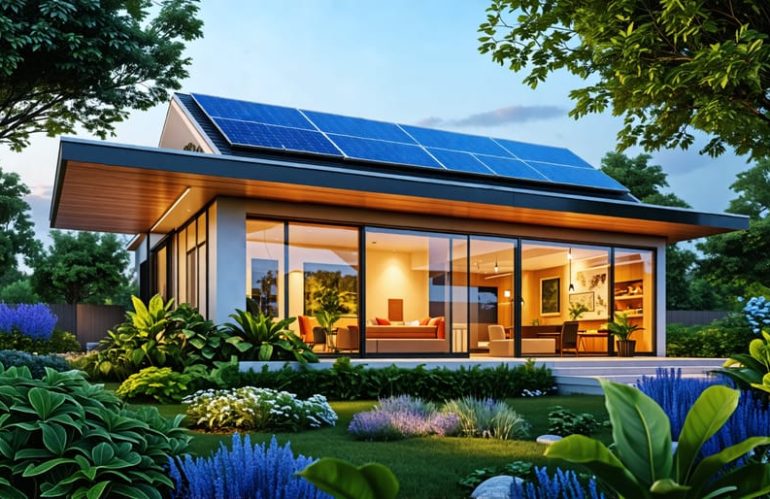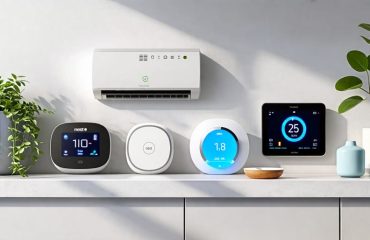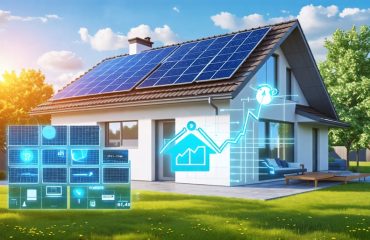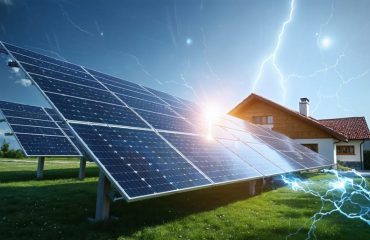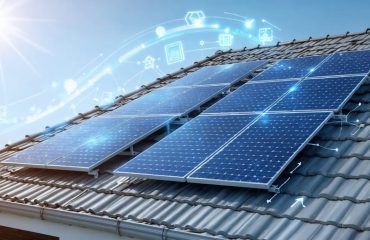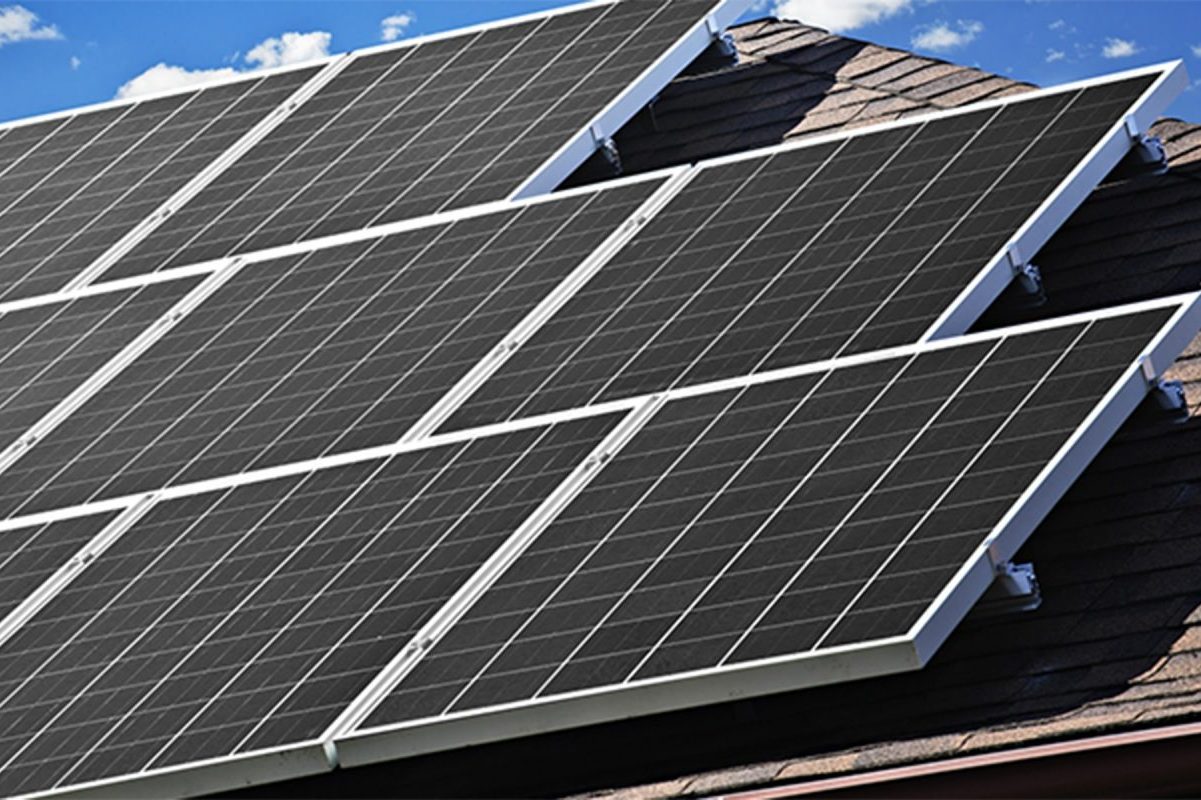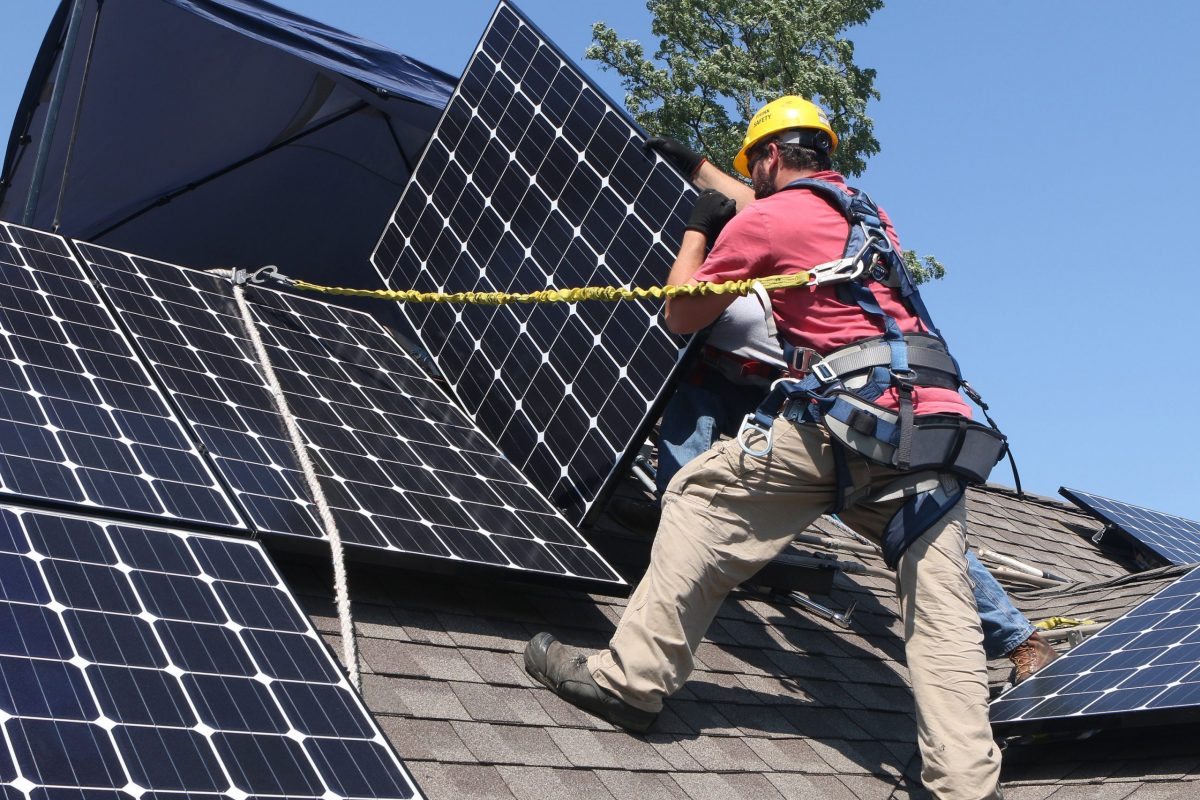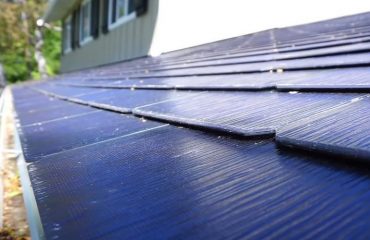Imagine a world where sustainable energy is not only accessible but also optimized for maximum efficiency and reliability. This is the promise of smart microgrids – the future of energy management for homes and communities.
Smart microgrids are revolutionizing the way we generate, distribute, and consume electricity. By integrating renewable energy sources like solar, wind, and battery storage with advanced monitoring and control systems, smart microgrids enable a more resilient, flexible, and environmentally-friendly energy infrastructure.
For residential solar customers, smart microgrids offer numerous benefits:
1. Increased energy independence and reliability, allowing homes to operate even during grid outages
2. Optimized energy usage and reduced electricity bills through intelligent demand response and load balancing
3. Seamless integration of electric vehicles, smart appliances, and home automation systems for a truly connected and efficient home energy ecosystem
As we navigate the challenges of climate change and the need for sustainable living, smart microgrids provide a powerful solution. By embracing this innovative technology, homeowners can not only reduce their carbon footprint but also enjoy the peace of mind that comes with a more secure, adaptable, and intelligent energy future.
Join us as we explore the world of smart microgrids and discover how this game-changing technology is transforming the way we power our homes and communities.
How Smart Microgrids Work
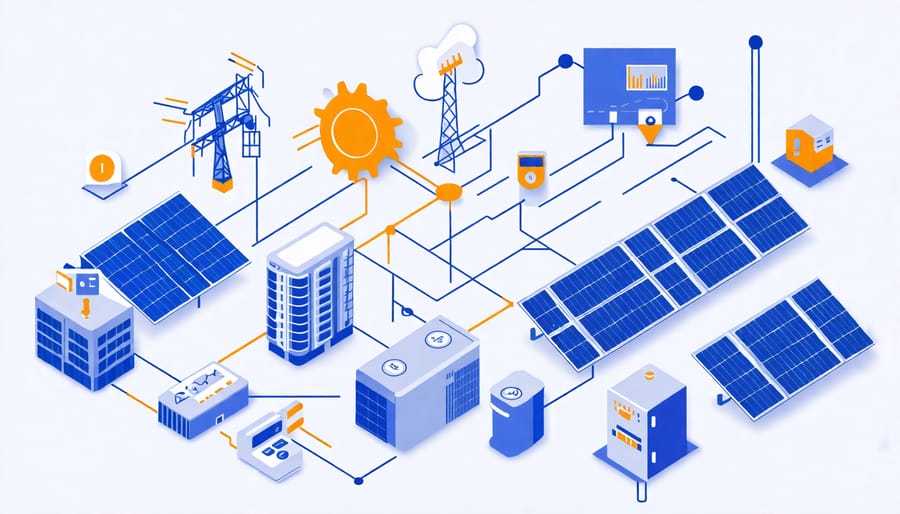
Solar Panels and Energy Storage
Solar panels and battery storage systems, also known as energy storage systems, are key components of smart microgrids. Solar panels convert sunlight into clean, renewable electricity, which can power homes and businesses. Any excess energy generated by the panels is stored in batteries for later use, such as during periods of high demand or when the sun isn’t shining. This stored energy can also be shared among the microgrid participants, ensuring a stable and reliable power supply. By integrating solar panels and battery storage, smart microgrids reduce reliance on the main grid, lower energy costs, and enhance the overall sustainability of the community. Additionally, these systems can provide backup power during outages, increasing the resilience of the microgrid. As technology advances, solar panels and energy storage solutions are becoming more efficient and affordable, making them an attractive option for homeowners looking to join or establish a smart microgrid.
Smart Meters and Energy Management Systems
Smart meters and energy management systems are essential components of smart microgrids, enabling real-time monitoring and optimization of energy production, consumption, and distribution. These advanced technologies collect data on energy usage patterns, allowing the microgrid to make intelligent decisions about how to allocate resources effectively. By analyzing this data, the system can predict peak demand periods and adjust energy production accordingly, ensuring a stable and reliable power supply. Energy management systems also enable homeowners to track their energy consumption, identify areas for improvement, and make informed decisions about their energy usage habits. This level of transparency and control empowers users to actively participate in the microgrid’s energy management process, leading to reduced energy waste and lower utility bills. Additionally, smart meters facilitate the seamless integration of renewable energy sources, such as solar panels, into the microgrid, maximizing the efficiency and environmental benefits of the system.
Grid Connection and Islanding Capabilities
Smart microgrids offer the flexibility to operate while connected to the main utility grid or independently during power outages, a feature known as islanding. When the main grid is functioning normally, smart microgrids can draw power from or feed excess energy back into the grid. However, if an outage occurs, the microgrid automatically disconnects from the main grid and continues to supply power to the connected homes and buildings. This islanding capability ensures a reliable and uninterrupted power supply, even during emergencies or maintenance work on the main grid. By seamlessly transitioning between grid-connected and islanded modes, smart microgrids provide enhanced energy resilience and independence for homeowners.
Benefits of Smart Microgrids for Homeowners
Increased Energy Efficiency and Cost Savings
Smart microgrids enable homeowners to optimize their energy usage by intelligently managing the flow of electricity between solar panels, battery storage systems, and the main grid. By continuously monitoring energy production, consumption, and storage levels, smart microgrids can automatically adjust the distribution of power to maximize efficiency and minimize waste. This results in reduced reliance on the main grid during peak hours when electricity rates are highest, leading to significant cost savings on monthly utility bills. Additionally, smart microgrids can prioritize the use of stored solar energy during periods of high demand or grid outages, further enhancing energy independence and reliability. With the ability to track and analyze energy usage patterns, smart microgrids empower homeowners to make informed decisions about their consumption habits and identify areas for improvement. By embracing smart microgrid technology, homeowners can enjoy the benefits of increased energy efficiency, lower electricity costs, and a more sustainable lifestyle.
Enhanced Energy Resilience and Reliability
Smart microgrids enhance energy resilience and reliability for homes by providing a backup power source during grid outages. By storing excess solar energy in batteries, smart microgrids can keep essential appliances and devices running even when the main grid goes down. This ensures that homeowners have access to electricity during emergencies, natural disasters, or planned maintenance. Additionally, smart microgrids improve overall energy reliability by balancing supply and demand in real-time. They can automatically adjust energy production and consumption based on weather conditions, time of day, and household needs. This intelligent energy management helps prevent power fluctuations and ensures a stable, uninterrupted supply of electricity. With a smart microgrid, homeowners can enjoy peace of mind knowing their energy system is resilient, reliable, and capable of providing power when they need it most. Investing in a smart microgrid not only enhances energy security but also contributes to a more sustainable and self-sufficient lifestyle.
Enabling a Sustainable and Low-Carbon Lifestyle
Smart microgrids play a crucial role in enabling a sustainable and low-carbon lifestyle for homeowners. By integrating renewable energy sources like solar panels, wind turbines, and energy storage systems, smart microgrids allow households to generate and consume clean energy, reducing their reliance on fossil fuels. This not only helps to lower a household’s carbon footprint but also promotes energy independence and resilience.
Smart microgrids optimize energy usage through intelligent demand response systems, which automatically adjust energy consumption based on real-time supply and demand. This ensures that energy is used efficiently, minimizing waste and reducing overall energy consumption. By participating in a smart microgrid, homeowners can actively contribute to a more sustainable future while enjoying the benefits of reliable, clean energy.
Moreover, smart microgrids often incorporate advanced metering and monitoring systems that provide homeowners with valuable insights into their energy usage patterns. This information empowers individuals to make informed decisions about their energy consumption, leading to more sustainable habits and further reductions in their carbon footprint. As smart microgrids continue to evolve and become more accessible, they offer a promising pathway for homeowners to embrace a greener, more sustainable lifestyle without compromising on comfort or convenience.
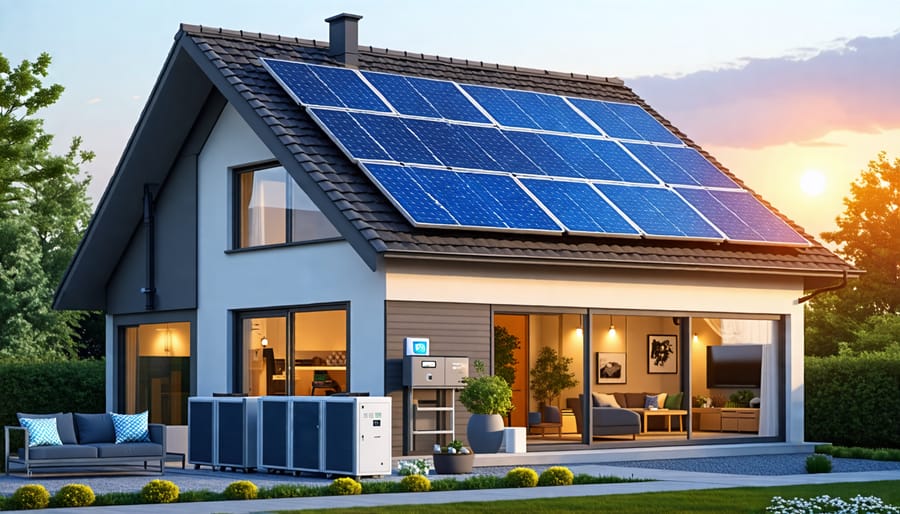
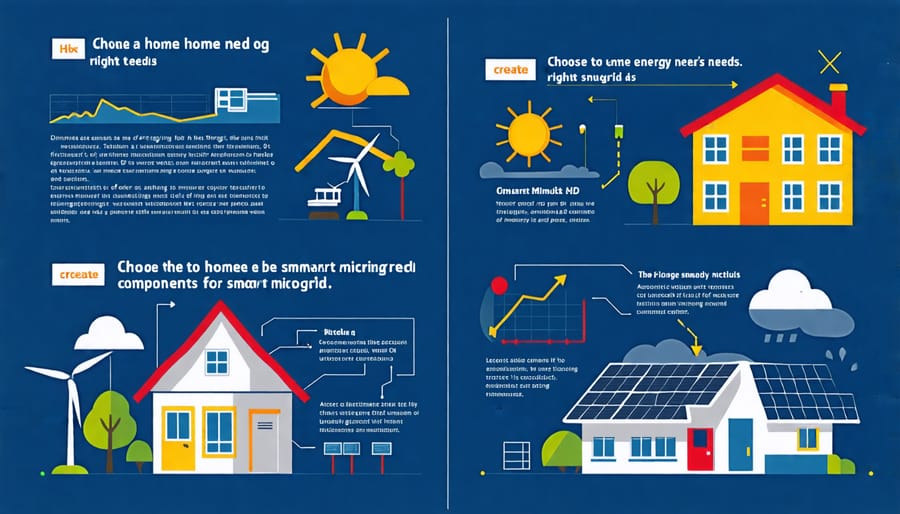
Implementing a Smart Microgrid for Your Home
Assessing Your Home’s Energy Needs
Before implementing a smart microgrid, it’s crucial to assess your home’s energy needs. Start by reviewing your energy bills and identifying high-consumption areas. Consider factors such as the size of your home, the number of occupants, and your lifestyle habits. This evaluation will help you determine the appropriate size and configuration of your smart microgrid system. By tailoring the system to your specific requirements, you can optimize energy efficiency, reduce waste, and maximize cost savings. A well-designed smart microgrid will not only meet your energy demands but also provide a reliable and sustainable power supply for years to come.
Choosing the Right Components and Providers
When building a smart microgrid, it’s crucial to choose high-quality components and reliable providers. Start by selecting suitable solar panels based on efficiency, durability, and warranty. Look for panels with high power output and low temperature coefficients for optimal performance. For energy storage, consider lithium-ion batteries with advanced safety features and long cycle life. Evaluate storage capacity, round-trip efficiency, and compatibility with your solar panels and inverter.
When choosing an installation provider, prioritize experience, certifications, and customer reviews. Seek out providers who specialize in smart microgrid design and have a proven track record of successful installations. Request detailed proposals, compare warranties, and ask about ongoing maintenance and monitoring services. By investing in quality components and partnering with a reputable provider, you can ensure your smart microgrid delivers reliable, sustainable energy for years to come.
Conclusion
In conclusion, smart microgrids represent a game-changing sustainable energy solution for homes. By intelligently managing energy generation, storage, and consumption, they enable greater energy independence, reliability, and cost savings. As renewable energy technologies continue to advance and become more accessible, the adoption of smart microgrids is poised to accelerate. Embracing this innovative approach to energy management not only benefits individual homeowners but also contributes to a greener, more resilient future for communities worldwide. With the potential to transform the way we produce and consume energy, smart microgrids are set to play a crucial role in creating a sustainable and prosperous energy landscape for generations to come.

